This page will provide you with some background information on the ancient historians that Dan Gibson quotes in this research. (as opposed to early Islamic writers.) These historians are crucial to our understanding of ancient history. A complete understanding of history, however, must take into account current archeological finds as well as the writings and opinions of the ancient historians, for all of the ancient historians wrote from their own perspective, and many of them were influenced by the current political, religious, or sociological thoughts of their day. Along with this, some of these historians were not eye witnesses, but rather wrote what was reported to them from others, (who may have obtained the information from still others).
Agatharchides of Cnidus (2nd Century BC)
Agatharchides of Cnidus lived in the 2nd Century BC during the Ptolemaic Dynasty and wrote a book entitled On the Red Sea. This volume made use of information available from the royal archives in Alexandria as well as his own eye witness reports. His book is very helpful in providing us with an eye witness account of the merchant trade of that time, and his book helped prove to the Ptolemaic Dynasty that there were some important and beneficial side effects of the Alexandrian stimulus to trade.
Athenaeus (second century AD)
Athenaeus was a Greek grammarian and author of Deipnosophistai (“The Gastronomers”), a work in the form of a symposium, in which a number of learned men, some bearing the names of real persons, such as Galen (famous in medical history), who meet at a banquet and discuss food and other subjects. It is in 15 books, of which 10 have survived in their entirety, the others in summary form. The value of the work lies partly in the great number of quotations from lost works of antiquity that it preserves, with nearly 800 writers being quoted, and partly in the variety of unusual information it affords on all aspects of life in the ancient Greco-Roman world.
Callimachus (305-240 BC)
Callimachus migrated to Alexandria because of his attraction to its famous library. King Ptolemy II Philadelphus of Egypt gave him employment in the Alexandrian library, the most important in the Hellenistic world. Of Callimachus’ voluminous writings, only fragments have survived, many of them discovered in the 20th century. His most famous poetical work was the Aetia (Causes), probably produced about 270 BC. This work is a narrative elegy in four books, containing a medley of recondite tales from Greek mythology and history by which the author seeks to explain the legendary origin of obscure customs, festivals, and names.
Dio Cassius (2nd-3rd century AD)
Dio Cassius was a Roman administrator and historian, the author of Romaica, a history of Rome, written in Greek. It is now recognized as one of the most important authorities for the last years of the republic and the early history of the empire. His history of Rome consisted of 80 books, beginning with the landing of Aeneas in Italy and ending in the reign of Alexander Severus (222-235 AD). Much of this work is preserved in later histories by Constantine VII Porphyrogenitus, John VIII Xiphilinus, and John Zonaras.
Diodorus Siculus
Diodorus was a Greek historian, born in 90 BC in Agyrium, Sicily. He was a contemporary of Julius Caesar and Augustus, first emperor of Rome. Diodorus traveled in Asia and Europe and lived for a long time in Rome, collecting the material for his great Bibliotheca Historica (Historical Library). This work is a history of the world in 40 books, from the creation through the Gallic Wars and up to the first years of the empire. Of this ambitious work, the first five books are preserved in their entirety, the next five are wholly lost, the next ten are complete, and considerable fragments of the others have been preserved. Diodorus died in 21 BC.
Epiphanius
Epiphanius was a Christian prelate and one of the Church Fathers. He lived from 315 to 403 AD. Epiphanius was born in Palestine but lived as a youth in Egypt. On his return home he was ordained a priest. He founded a monastery near Eleutheropolis in 335 AD, which he directed for 30 years. In 367 he was nominated bishop of Constantia (formerly Salamis) in Cyprus and held office until his death. He encouraged the growth of monasticism supported traditional orthodoxy against the heresies of the time, and attended the synods of Antioch (376) and Rome (382). He was, in particular, a zealous antagonist of the Christian writer and teacher Origen. Among his works are Panarion, a treatise on heresies; Ancoratus, a polemic against Origen; and Anacephaloeosis, summaries of theology and ritual. The writings of Epiphanius are a particularly valuable source for the student of the history of theology.
Herodotus
Herodotus was a Greek historian, known as the “father of history.” He was born around 484 BC in Halicarnassus which is known as Bodrum in modern Turkey. It is believed that Herodotus was exiled from his home city sometime around 457 BC for conspiring against Persian rule. Once he was expelled he started his travels, writing about each of the countries that he passed through. He traveled extensively in Asia Minor, Babylonia, Egypt, and Greece and the Middle East.
Sometime around 447 BC Herodotus traveled to Athens, which at the time was considered the cultural center of the Greek world. The men of Athens loved to learn about other places, and enter into philosophical debate. As a result Herodotus won the admiration of the most distinguished men, including that of the great Athenian statesman Pericles.
In 443 BC Herodotus settled in Thurii, in southern Italy, and devoted the remainder of his life to the completion of his great work, entitled History. Students of his volume History later divided it into nine books. The earlier books deal with the customs, legends, history, and traditions of the peoples of the ancient world, including the Lydians, Scythians, Medes, Persians, Assyrians, and Egyptians. The last three books describe the armed conflicts between Greece and Persia in the early 5th century BC.
Herodotus presented the development of civilization as moving towards a great confrontation between Persia and Greece, which he regarded as the centers of Eastern and Western culture.
It is believed that Herodotus’ information came partly from the work of predecessors, and partly from the observations that he had made during his own travels. Although he was sometimes inaccurate, he was generally careful to distinguish between plausible and implausible reports. Herodotus died in 425 BC.
Jerome
Jerome was born in 342 as Eusebius Jieronimus Sophronius, but was latter known simply as Jerome. He was a gifted and diligent scholar, a master of languages and a lover of books. He was a contemporary of Augustine of Hippo (352-420 AD) and John Chrysostom (345 - 407 AD). Jerome was educated in Rome and in his mid-twenties was baptized as a believer. During the following years he was attracted to the ascetic lifestyle, but moved from place to place. For two years, he was secretary to Pope Damasus until his death. Under his encouragement he started work on a Latin translation of the Scriptures, which would one day become the Vulgate translation of the Bible.
After the death of Damasus, Jerome left Rome, and settled near Bethlehem, building a monastery for study and translation. From this point he not only worked on his translation, but also directed young men in outreach ministries. One of the men studying under him was Hilarion, who would later become St. Hilarion. In one of his writings, Jerome describes the role of Hilarion as he converted the Nabataeans at Elusa in the Negev to Christianity. Jerome is often known as Saint Jerome today.
Josephus Flavius
Flavius Josephus was a Jewish historian, born in 37 AD in Jerusalem of both royal and priestly lineage. His original name was Joseph Ben Matthias. A man both learned and worldly, he was a member of the Pharisees, and also a public figure who, before the Jewish revolt against Rome (66 AD), had made friends at the court of Emperor Nero.
The parts played in the revolt by the Zealots, and their opponents the Pharisees, who considered it futile, led to ambiguity in the historical record of the role of Josephus, a Pharisee, in the conflict. His own writings present two conflicting accounts of his mission in the province of Galilee (in what is now Israel). According to one account, he took command of the Jewish forces there to lead the Galilean phase of the revolt, but the other, later, account contends that he sought to subdue the revolt rather than lead it. Whichever story may be true; he apparently prepared Galilee for the coming onslaught and in 67 courageously repulsed the advance of Vespasian, the Roman general who was soon to become emperor, defending the fortress of Jotapata for 47 days before surrendering. Josephus would have been sent as a prisoner to Nero had he not had the wit to prophesy that his captor, Vespasian, would himself one day be emperor. This prophecy accorded with Vespasian’s ambitions, and the general kept Josephus with him, thus probably saving his life. While Vespasian’s prisoner, Josephus saw the subjugation of Galilee and Judea. Subsequently freed, he adopted Vespasian’s family name, Flavius. Accompanying another future emperor, Vespasian’s son Titus, he witnessed Titus’s siege of Jerusalem in 70. Thereafter, enjoying imperial patronage under Titus and his brother’s successor, Domitian, Josephus lived until his death in 101 AD in Rome and devoted himself to his writing.
His works include The Jewish Wars (in 7 books), which he wrote to dissuade his people and other nations from courting annihilation by further revolt against an all-powerful Rome, Jewish Antiquities (in 20 books), a history of the Jews from the creation to AD 66 that eloquently demonstrates how his people had flourished under the law of God, Life, an autobiography, and Against Apion, a refutation of charges against the Jews made by the anti-Semitic Greek grammarian Apion (flourished 1st century) and other like-minded writers. The latter work is invaluable, because Josephus recapitulates writings on Jewish history that are no longer in existence.
Pliny the Elder (23 AD -79 AD)
Pliny was a Roman writer and encyclopedist, who was the foremost authority on science in ancient Europe. He was born as Gaius Plinius Secundus in Novum Comum, which is now called Como in modern Italy. At an early age he and his family moved to Rome.
When Pliny was 23 years old, he entered the army, serving in a campaign in Germania. Returning to Rome in AD 52, he studied legal jurisprudence, but, being unsuccessful as an advocate he devoted himself to study and writing.
From about 70 to 72 he served in Spain as procurator, or collector of imperial revenues. In 79, when the great eruption of Vesuvius overwhelmed and destroyed Herculaneum and Pompeii, he was stationed at Misenum, near Naples, in command of the western Roman fleet. Eager to examine the volcanic phenomenon more closely, he sailed across the bay of Naples to Stabiae, where he died from suffocation due to a volcanic eruption.
Pliny wrote many historical and scientific works, including De Laculatione Equestri, a treatise on the use of the javelin by cavalrymen; Studiosus, 3 books on the training of a young orator, written apparently for the guidance of his nephew Pliny the Younger; Dubius Sermo, an 8-book treatise on declensions and conjugations; a 20-book history of the Germanic Wars; and, more importantly to us, 31 books of Roman history covering 41 AD to 71 AD.
Pliny’s great encyclopedia of nature and art in 37 books, the Historia Naturalis, is the only one of his works that has been preserved. It embraces, as he states in his dedicatory epistle to the Roman emperor Titus, 20,000 important facts, extracted from about 2,000 volumes by 100 authors. The first ten books were published in AD 77 and the remainder after his death, probably by Pliny the Younger. The encyclopedia covers astronomy, geography, ethnology, anthropology, human physiology, zoology, botany, horticulture, medicine, and medicaments from plant and animal substances, mineralogy and metallurgy, and the fine arts, and also contains a valuable digression on the history of art. The encyclopedia is valuable for the enormous amount of information it provides on the art, science, and civilization of Pliny’s time and for its anecdotes on the facets of daily life in Rome.
Pliny the Younger (62 AD -113 AD)
Pliny the Younger was a Roman official, whose letters give us a valuable description of life in the 1st century AD. Pliny the Younger’s full Latin name was Gaius Plinius Caecilius. He was a nephew and later adopted by, Pliny the Elder. In 79 AD he took the Pliny name.
Pliny the Younger was born in Novum Comum, and studied in Rome under the famous teacher and rhetorician, Quintilian. Pliny was distinguished both for his literary accomplishments and for his oratorical ability. He held numerous official appointments.
As a young man, he served as military tribune in Syria, where he frequented the schools of the Stoics. He was a Quaestor Caesaris at the age of 25. He became praetor and then consul in 100. In that same year, he wrote the Panegyricus, a eulogy of the Emperor Trajan.
Around 111 he was appointed governor of the province of Bithynia, where he remained for two years. He was married three times, but died childless.
Pliny collected and published nine books of Epistulae (letters), and a tenth book, containing his official correspondence as governor of Bithynia with the Emperor Trajan, was published after his death. To these letters, Pliny owes his place in literature as one of the masters of the epistolary style. The private letters, most of which were undoubtedly written or revised with a view to publication, give a valuable picture of the life of the writer and of his friends and contemporaries. Pliny himself appears in the letters as a genial philanthropist, devoted to literary pursuits and to improving his estates by architectural adornment. The most interesting letters include two of his friend, the historian Publius Cornelius Tacitus, on the eruption of Vesuvius; one letter describing in detail his villa at Laurentum, the other relating the story of a haunted house in Athens; and one to the Roman Emperor Trajan, concerning policy against the Christians.
Polybius (200 BC - 120 BC)
Polybius was a Greek historian, born in Megalopolis. He was one of the thousand noble Achaeans who, after the conquest of Macedonia in 168 BC, were sent to Rome as hostages. At Rome, Polybius was received into the home of the Roman general Lucius Aemilius Paulus and became the tutor of his two sons, the younger of whom was adopted into the Scipio family, becoming known as Scipio Africanus the Younger. Scipio and Polybius became close friends.
In 151 BC, after 16 years in Italy, the surviving Achaean exiles were permitted by the Roman Senate to return to Greece. Polybius, however, soon rejoined Scipio, followed him in his African campaign, and was present at the sack of Carthage in 146 BC which marked the end of the Punic Wars. At the outbreak of the war between the Achaeans and the Romans Polybius returned to Greece, where he was able to use his influence with the Romans to obtain favorable terms for the vanquished.
The latter part of his life was devoted to the composition of his great work, Universal History in 40 books. His aim was to show how and why the civilized countries of the world fell under the dominion of Rome. The work covers the period between 264 and 146 BC, the year that Corinth fell. Only the first five books have survived, but the plan of the whole work is known.
As a historian, Polybius tried not merely to list facts and events but to discover the underlying causes behind them and to draw lessons for the future. His tone is frequently didactic, and the continuity of his narrative is often interrupted by digressions. His style is simple and clear. In the history of Greek literature his work is significant because it is written in the so-called common dialect, a modified Attic, which came into use about 300 BC.
Strabo (63 BC - AD 24)
Strabo was a Greek geographer and historian, born in Amasya, Pontus, which is now in modern Turkey. He traveled extensively in Egypt, as part of an expedition up the Nile led by Aelius Gallus, Roman prefect of Egypt. Later Strabo spent many years in Rome until his death.
During his life, Strabo traveled a great deal. His journeys took him from Armenia in the east to Sardinia in the west and from the Black Sea in the north to the borders of Ethiopia in the south.
Only a few fragments of his great historical work, which comprised 43 books have survived. His volumes were a supplement to the history of the Greeks by the historian Polybius. His book, entitled ‘Geography’ is a detailed description of the world as it was known to the ancients. All 17 books of the Geography series are almost entirely preserved until this day. They are particularly valuable as they contain a record of his own personal observations.
Ptolemy
Virtually nothing is known about Ptolemy’s life. He wrote many of his books between 127-145 AD in Alexandria. He was an astronomer, geographer, and mathematician who considered the Earth the center of the universe (the “Ptolemaic system”).
One of his works, known as The Almagest, is divided into 13 books, each of which deals with certain astronomical concepts pertaining to stars and to objects in the solar system. In essence, it is a compilation of Greek astronomy, and the major source of knowledge about the work of Hipparchus, most probably the greatest astronomer of antiquity. In one book, Ptolemy compiled a star catalog of 1,022 stars.
Ptolemy also wrote books about mathematics and geography. But it is his work as a geographer that is of interest to the student of history.
As a geographer, Ptolemy’s reputation rests mainly on his Geographike hyphegesis (Guide to Geography), which was divided into eight books; it included information on how to construct maps and lists of places in Europe, Africa, and Asia tabulated according to latitude and longitude. There were, however, many errors in the Guide. For example, the Equator was placed too far north, and the value used for the circumference of the Earth was nearly 30 percent less than a more accurate value that had already been determined before, as well as some contradictions between the text and maps.
The Guide is an important work from a historical point of view because, like the Almagest, it exerted a great influence on later generations. Christopher Columbus, for example, used it to strengthen his belief that Asia could be reached by traveling westward because Ptolemy had indicated that Asia extended much farther east than it actually does. Even as late as 1775, it was believed that the Indian Ocean was bounded by a southern continent, as Ptolemy had suggested. It wasn’t until the return voyage from the Southern Hemisphere by Capt. James Cook that proved otherwise.
Pausanias (143-176 AD)
Pausanias was born in Lydia. He was a Greek traveler and geographer whose Periegesis Hellados (Description of Greece) is an invaluable guide to ancient ruins.
Before visiting Greece, Pausanias had traveled widely in Asia Minor, Syria, Palestine, Egypt, Macedonia, Epirus (now in Greece and Albania), and parts of Italy. His Description takes the form of a tour of Greece starting from Attica. It is divided into 10 books; the first book seems to have been completed after 143, but before 161. No event after 176 is mentioned in the work.
His account of each important city begins with a sketch of its history; his descriptive narration follows a topographical order. He gives a few glimpses into the daily life, ceremonial rites, and superstitious customs of the inhabitants and frequently introduces legend and folklore.
Works of art are his major concern: inspired by the ancient glories of Greece, Pausanias is most at home in describing the religious art and architecture of Olympia and Delphi. At Athens he is intrigued by pictures, portraits, and inscriptions recording the laws of Solon; on the Acropolis, the great gold and ivory statue of Athena; and, outside the city, the monuments of famous men of the Athenians fallen in battle. The accuracy of his descriptions has been proved by the remains of buildings in all parts of Greece.
The topographical part of his work shows his fondness for the wonders of nature: the signs that herald the approach of an earthquake; the tides; the icebound seas of the north; and the noonday sun, which at the summer solstice casts no shadow at Syene (Aswan), Egypt. The famed anthropologist and classical scholar Sir James Frazer said of Pausanias: “without him the ruins of Greece would for the most part be a labyrinth without a clue, a riddle without an answer.”
Arian (2nd century AD)
Arian was a Greek historian and philosopher who was the author of a work describing the campaigns of Alexander the Great. His book is entitled Anabasis, (Xenophon also had a work by the same title). The first seven books describe Alexander’s military exploits. The eighth book, the Indica, tells of Indian customs and the voyage of Nearchus in the Persian Gulf.
Arian’s other works include the Encheiridion, a manual of the teachings of Epictetus, the Stoic philosopher whose disciple Arian was. This work was much used in the European Middle Ages as a guide to the principles of the monastic life.
Philo Judaeus (approx. 15 BC - 50 AD)
Philo Judaeus was a Greek-speaking Jewish philosopher and the most important representative of Hellenistic Judaism. His writings provide the clearest view of this development of Judaism in the Diaspora. He probably lived in Alexandria.
Philo’s works may be classified into four groups. 1. Scriptural essays and homilies based on specific verses or topics of the Pentateuch (the first five books of the Bible), especially Genesis. 2. General philosophical and religious essays. 3. Essays on contemporary subjects. 4. A number of works ascribed to Philo are almost certainly not his. The most important of these is Biblical Antiquities, an imaginative reconstruction of Jewish history from Adam to the death of Saul, the first king of Israel.
Lucian of Syria (120-185 AD)
Lucian was a satirist and brilliant entertainer, who spared neither gods nor humans in his writings.
Lucian took up writing critical and satirical essays on the intellectual life of his time, either in the form of Platonic dialogues or, in imitation of Menippus, in a mixture of prose and verse. Lucian’s writings apparently sustained the reputation he had won as a public speaker. Thanks to the patronage of his Roman friends, he obtained a lucrative post in Alexandria as archistator, a kind of chief court usher. After some years, he returned to Athens. There are 80 prose works traditionally attributed to Lucian.
Lucian was particularly critical of those whom he considers impostors. He regarded the worst charlatans of all to be those philosophers who failed to practice what they preached. He also in complained about the absurd beliefs concerning the Olympian gods.
Lucian’s best work in the field of literary criticism was his treatise How to Write History. In this work, he stressed using impartiality, detachment, and rigorous devotion to truth.
Lucian’s writings give us an important window into the thoughts and attitudes of the Mediterranean world in the first century.
Other Ancient Documents
The Petra Scrolls
These scrolls consist of 152 rolls of burnt papyri found in the old Byzantine church in Petra. Archeologists were at first very pessimistic about the Petra Scrolls. They were deep black, fragile, and embedded in burnt debris. Some of them were single rolls, while others were baked together in flat cakes. Since the papyri were rolled with the writing on the inside, the archeologists could see a few pieces of papyri with the ink still intact. From this writing, they could date the Petra Scrolls to the sixth century.
Fortunately, a protective crust had formed when the outer windings of the rolls were baked together with the surrounding debris, preserving their shape even when they were broken into fragments. After the fire, they were buried under tons of stone, debris, and sand until their discovery.
Of the rolls excavated by the American Center of Oriental Research, 23 yielded partially continuous text segments and another 19 provided fragments with substantial information. The archive contains documents from 528 AD until the reign of Tiberius Mauricius (582-602 AD.)
Two teams, one from Finland, and one from the United States worked on the scrolls. The burnt papyri demonstrated that Petra was not completely destroyed by an earthquake in 551 as previously thought. In contrast, the papyri and subsequent the archaeological evidence create a picture of Petra as a viable city throughout the sixth and into the seventh century.
Most of the papyrus rolls deal with important property matters: sales, testamentary bequests, dowries, or divisions of property. The various transactions concern vineyards, sown land, orchards, apartments, and stables. As a result the scrolls open a window for us into the world of well-to-do landowners, church officials, soldiers and other officers.
Of particular interest are two donations after death. A dying man had assembled his friends and named two curators for his estate. They were ordered to take care of the lifetime needs of his mother; after her death, the remainder was to be donated to the “house of Aaron” and a church-run hospice or hospital. The “house of Aaron” might be related to a Byzantine monastery on top of Mount Haroun, the towering mountain overlooking Petra.
The papyri also have much to say about agriculture and architecture in Petra. The rolls confirm that wine, wheat, and fruits from orchards were the characteristic products of ancient desert agriculture. In general, land around Petra was measured in Roman iugera.
From tax records, it appears that in many cases Hebrew fluid measures were used to determine the size of fields. They measured a field by the amount of seed needed. This makes sense when local conditions did not allow farmers to sow the entire area regularly. This easily occurs in desert agriculture when the amount of rain or other water changes from one year to the next or when rocks and migrating stones and sand render part of the area infertile.
In terms of architecture, the text describes Petra as a city of irregular structures with additions wherever there was space, often on the roof. All houses had an internal yard around which the rooms, apartments, and stables were arranged. Other common features were a portico, a watchtower, staircases inside the yards and balconies. Cisterns and orchards also were mentioned.
In one instance, a dung heap stood next to a bedroom. The density of the habitation must have made living difficult. Therefore, it was essential to define the rights of persons in every detail. Much of the legal phraseology is standardized, as in modern contracts; and most of it is well known from Egypt.
Most of the scrolls are legal documents dealing with the sale of land or slaves. Also interesting to archeologists, is the new vocabulary that has come to light.
Cooking Books
Ancient cooking books are useful in discovering when certain spices and herbs arrived in the kitchens of Europe. While it is not an exact science, these ancient cooking books certainly alert us to the availability of Indian and Chinese spices. This is helpful information in discovering when Arab and Nabataean merchants actually began and conducted trade with India and China.
Cooking books have been written in almost every literate society. One of the most famous of the early ones is the Deipnosophistai (“The Learned Banquet”), a treatise on food and food preparation written in the 2nd century BC by Athenaeus, a Greek gourmet. The treatise is presented in the form of a dialogue between two people at a banquette, who talk for days and relate recipes for many different dishes. Athenaeus was by no means the earliest Greek writer on cooking; he mentions more than 20 authors who preceded him, one of whom, Archestratus, produced his masterpiece, Hedypatheia (“Pleasant Living”), in 350 BC.
Another famous gourmet of the ancient world was Apicius, a wealthy Roman merchant during the reign of Tiberius (AD 14-37). Apicius’ colossal banquets eventually drove him to bankruptcy and suicide, but he left behind a cookbook so prized that it has been preserved, in numerous editions, down to the 20th century.
Another famous cookbook was the Roman cookbook called, Marcus Gavius Apicius: De Re Coquinaria. A modern translation has been edited and translated from the Latin by Robert Maier.
The Periplus Maris Erythraei
The title of this book means Circumnavigation of the Erythrean (i.e. the Red Sea). This is a seafaring manual which was probably written in the second half of the 1st century A.D. by a man with a Greek name, living in Alexandria. This manual is very important as it shows us to what extend the shipping lanes had gained in importance at the expense of the overland caravan routes.
The Periplus describes in some detail the shore of what was to become northern Somalia. Ships sailed from there to western India to bring back cotton cloth, grain, oil, sugar, and ghee, while others moved down the Red Sea to the East African coast bringing cloaks, tunics, copper, and tin. Incense and aromatic gums, tortoiseshell, ivory, and slaves were traded in return.
The book also lists a series of ports along the Indian coast, including Muziris (Cranganore), Colchi (Korkai), Poduca, and Sopatma. An excavation at Arikamedu (near Pondicherry) revealed a Roman trading settlement of this period, and elsewhere, too, the presence of Roman pottery, beads, intaglios, lamps, glass, and coins point to a continuous occupation, resulting even in imitations of some Roman items. It would seem that textiles were prepared to Roman specification and exported from such settlements. Graffiti on pottery found at a port in the Red Sea indicates the presence of Indian traders.
The maritime trade routes from the Indian ports were primarily to the Persian Gulf and the Red Sea, from where they went overland to the eastern Mediterranean and to Egypt, but Indian merchants also ventured out to Southeast Asia seeking spices and semiprecious stones. As a result, Hinduism took a hold in Indonesia during the 1st century AD. Chinese ships on the other hand, sailed as far a Ceylon, where they exchanged goods with Arab traders.
The Periplus Maris Erythraei also addresses the kingdoms of southern Arabia mentioning an individual who was “king of two nations, the Homerites and the Sabaeans.”
The Cosmas
This book is a maritime manual of sixth century AD Byzantine trade with India.
The Archives of Zenon
These archives are a collection of 2000 papyri dating from 259 BC. They were in the possession of a man named Zenon, who was the business agent for Apollonius, the financial minister of Ptolemy II, Philadelphos. These manuscripts are mostly receipts and memos, but they give us an interesting glimpse into the everyday life of people during this period of time. Some of the documents mention Nabataeans, as selling frankincense and myrrh as well as dealing in prostitutes.
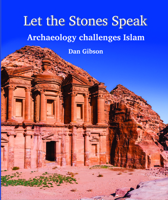
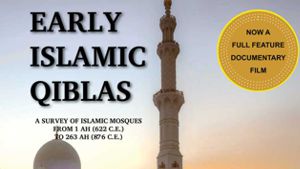

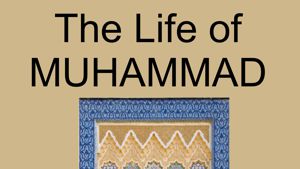
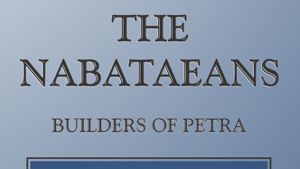



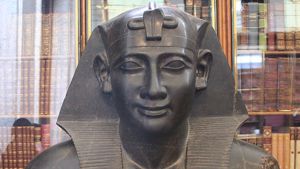
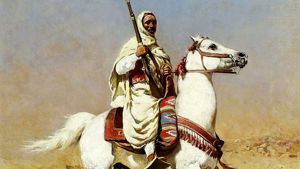


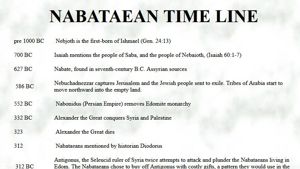



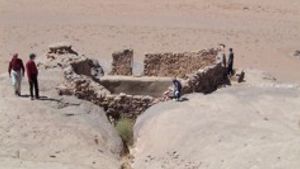
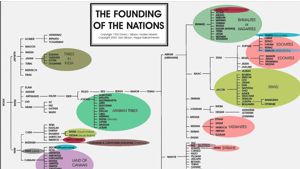
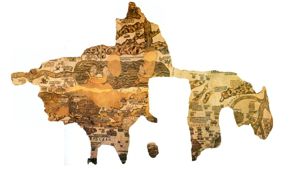
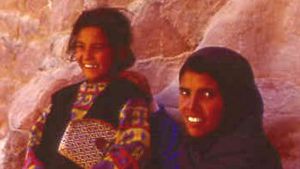
Page Discussion
Membership is required to comment. Membership is free of charge and available to everyone over the age of 16. Just click SignUp, or make a comment below. You will need a user name and a password. The system will automatically send a code to your email address. It should arrive in a few minutes. Enter the code, and you are finished.
Members who post adverts or use inappropriate language or make disrespectful comments will have their membership removed and be barred from the site. By becoming a member you agree to our Terms of Use and our Privacy, Cookies & Ad Policies. Remember that we will never, under any circumstances, sell or give your email address or private information to anyone unless required by law. Please keep your comments on topic. Thanks!